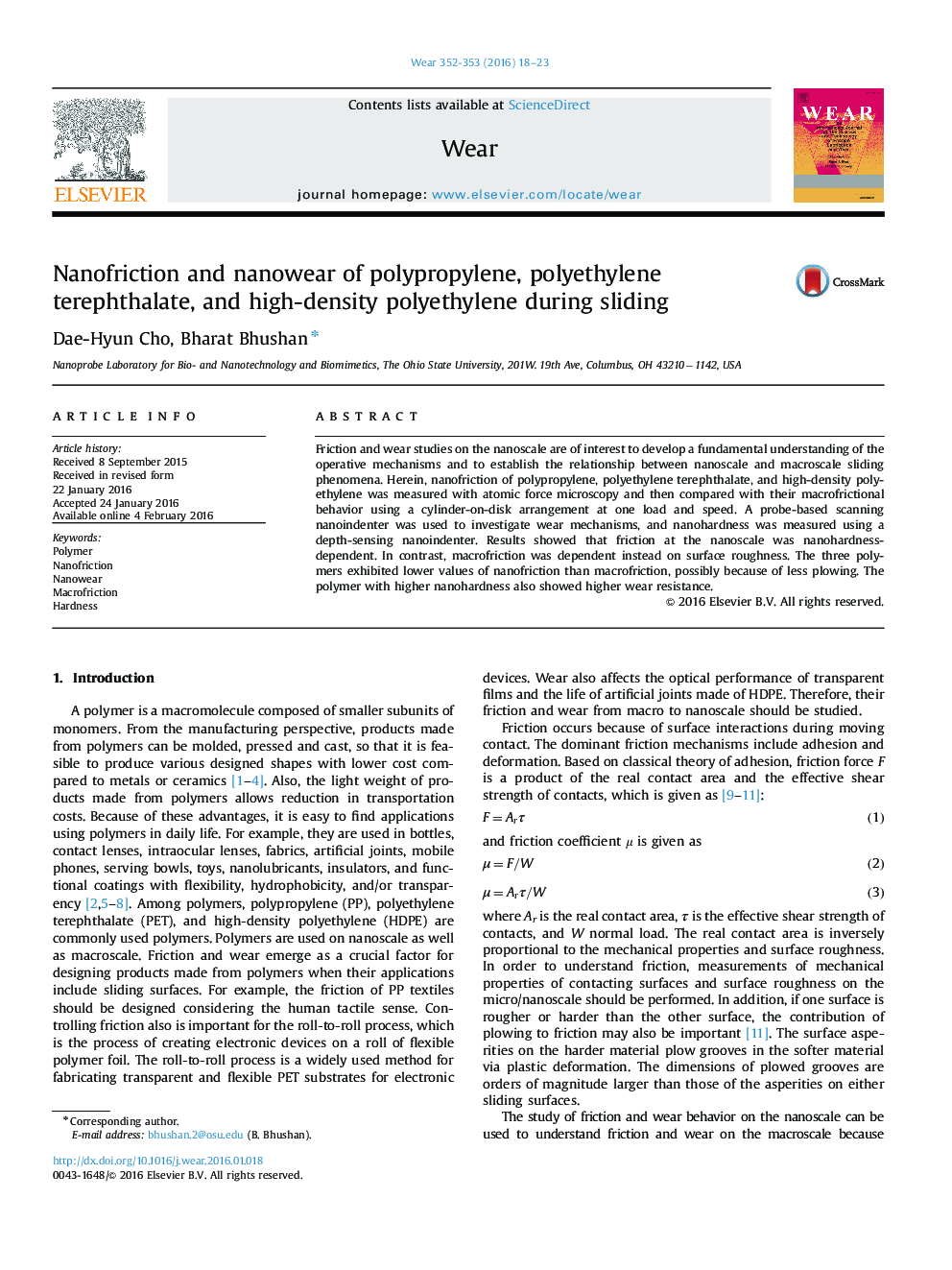| کد مقاله | کد نشریه | سال انتشار | مقاله انگلیسی | نسخه تمام متن |
|---|---|---|---|---|
| 616905 | 1454965 | 2016 | 6 صفحه PDF | دانلود رایگان |
• Comparison of macro and nanofriction of polymers.
• Nanowear of polymers.
• Nanohardness dependent friction on nanoscale.
• Surface roughness dependent friction on macroscale.
• Higher nanohardness showed higher wear resistance.
Friction and wear studies on the nanoscale are of interest to develop a fundamental understanding of the operative mechanisms and to establish the relationship between nanoscale and macroscale sliding phenomena. Herein, nanofriction of polypropylene, polyethylene terephthalate, and high-density polyethylene was measured with atomic force microscopy and then compared with their macrofrictional behavior using a cylinder-on-disk arrangement at one load and speed. A probe-based scanning nanoindenter was used to investigate wear mechanisms, and nanohardness was measured using a depth-sensing nanoindenter. Results showed that friction at the nanoscale was nanohardness-dependent. In contrast, macrofriction was dependent instead on surface roughness. The three polymers exhibited lower values of nanofriction than macrofriction, possibly because of less plowing. The polymer with higher nanohardness also showed higher wear resistance.
Figure optionsDownload high-quality image (176 K)Download as PowerPoint slide
Journal: Wear - Volumes 352–353, 15 April 2016, Pages 18–23
